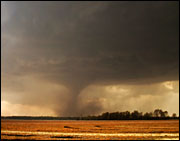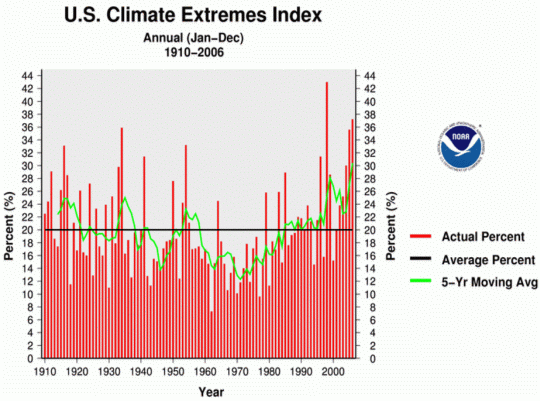
Global warming has long been predicted to make the weather more extreme. Wouldn’t it be great if there were an official government index of extreme weather — of heat, drought, rainfall, and hurricanes — that would let us know if the prediction had come true?
Well, such an index exists: the National Climatic Data Center’s Climate Extremes Index. As the figure shows, the most extreme year by far was 1998; 2006 was the second most extreme, followed closely by 2005. The fourteen least extreme years all predate 1981. The weather is becoming more extreme, as predicted:
Yet my guess is that you’ve never heard of the U.S. Climate Extremes Index, even though it was explicitly created to take a complicated subject (“multivariate and multidimensional climate changes in the United States“) and make it more easily understood by American citizens and policy makers.
I follow this subject — the connection between climate change and extreme weather — closely, and yet, until 2006, I had not seen a single mention of the Index in the media or even in a scientific paper since its original introduction more than a decade ago. Global warming may be a hot subject, and 2006 was the second most extreme year ever, but just try a Google News search of “Climate Extremes Index.”
Story after story after story after story after story after story after story appear in the mainstream media with no link whatsoever between extreme weather and global warming — uncoupled from the man-made trend that will ultimately transform all our lives. The media must do better.
This post was created for ClimateProgress.org, a project of the Center for American Progress Action Fund.



